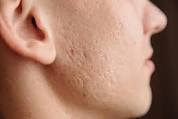Conquering Fungal Infections on Hands: Causes, Symptoms, and Treatment
Introduction:
Our hands are indispensable tools in our daily lives, facilitating tasks ranging from intricate work to basic hygiene. However, when fungal infections strike the hands, they can cause discomfort, irritation, and interfere with our ability to perform everyday activities. In this comprehensive guide, we'll explore the causes, symptoms, diagnosis, and treatment of fungal infections on the hands, empowering you to effectively manage and overcome this common dermatological condition.
Understanding Fungal Infections on Hands:
Fungal infections on the hands, also known as tinea manuum or hand fungus, are caused by dermatophyte fungi that thrive in warm, moist environments. These fungi can infect the skin of the hands through direct contact with contaminated surfaces, objects, or skin, leading to a range of symptoms and complications. Fungal infections on the hands are more common in individuals who frequently engage in activities that expose their hands to moisture, such as washing dishes, gardening, or wearing gloves for prolonged periods.
Causes of Fungal Infections on Hands:
Several factors can increase the risk of developing fungal infections on the hands, including:
- Direct contact with contaminated surfaces, objects, or individuals carrying fungal pathogens.
- Excessive moisture or sweating of the hands, which creates an ideal environment for fungal growth.
- Compromised immune system function, which reduces the body's ability to fight off fungal infections.
- Pre-existing skin conditions like eczema or psoriasis, which may weaken the skin's natural defenses and make it more susceptible to fungal invasion.
- Sharing personal items like towels, nail clippers, or manicure tools with individuals who have fungal infections.
Symptoms of Fungal Infections on Hands:
The symptoms of fungal infections on the hands can vary depending on the type of fungus involved and the severity of the infection. Common symptoms may include:
- Redness, inflammation, or rash on the hands, particularly on the palms, fingers, or in between the fingers.
- Itching, burning, or stinging sensation in the affected areas.
- Peeling, cracking, or scaling of the skin, which may resemble dry skin or eczema.
- Blistering or oozing of fluid from the affected areas, especially in more severe cases.
- Thickening or discoloration of the nails, particularly if the fungal infection spreads from the skin to the nail beds.
Diagnosis of Fungal Infections on Hands:
Diagnosing a fungal infection on the hands typically involves a thorough examination of the affected areas by a healthcare professional, often a dermatologist or primary care physician. This may include:
- Visual inspection of the hands and nails to assess the appearance of the skin, nails, and any associated symptoms.
- Collection of skin or nail samples for laboratory analysis and fungal culture to identify the specific type of fungus causing the infection.
- Evaluation of medical history and risk factors, such as recent exposure to fungal pathogens, previous skin conditions, or underlying health conditions.
Treatment of Fungal Infections on Hands:
The treatment of fungal infections on the hands aims to eliminate the fungal infection and alleviate symptoms. Depending on the severity of the infection, treatment options may include:
- Topical antifungal creams, ointments, or gels containing agents like clotrimazole, miconazole, or terbinafine to directly target the fungal overgrowth on the skin.
- Oral antifungal medications may be prescribed in severe or recurrent cases, especially if the infection has spread to the nails or other parts of the body.
- Proper hand hygiene practices, such as washing the hands regularly with soap and water, drying them thoroughly, and avoiding excessive hand sweating or moisture.
- Avoidance of irritants or allergens that may exacerbate symptoms, such as harsh soaps, detergents, or chemical irritants.
- Protective measures, such as wearing gloves when working with water, chemicals, or soil, to prevent exposure to fungal pathogens.
Prevention of Fungal Infections on Hands:
While it may not be possible to completely prevent fungal infections on the hands, certain measures can help reduce the risk of infection:
- Practice good hand hygiene by washing the hands regularly with soap and water, especially after touching contaminated surfaces or objects.
- Dry the hands thoroughly after washing, paying particular attention to the spaces between the fingers and under the nails.
- Avoid sharing personal items like towels, nail clippers, or manicure tools with individuals who have fungal infections.
- Keep the hands clean and dry, particularly if they are prone to sweating or moisture, by using absorbent powders or antiperspirants.
- Treat underlying skin conditions like eczema or psoriasis promptly to prevent weakening of the skin's natural defenses against fungal infections.
Conclusion:
Fungal infections on the hands can be uncomfortable and disruptive, but with prompt diagnosis and appropriate treatment, most infections can be effectively managed. If you experience symptoms suggestive of a fungal infection on your hands, such as redness, itching, or peeling of the skin, seek medical attention promptly to receive a proper evaluation and treatment plan. By understanding the causes, symptoms, and treatment options for fungal infections on the hands, you can take proactive steps to protect your hand health and maintain optimal skin integrity. With patience, consistency, and proper care, you can conquer fungal infections on your hands and restore comfort and confidence to your daily life.
Call now
on our Mobile 8669086098 to book an appointment
Kindly visit our website Derma Solutions to know more.




Comments
Post a Comment